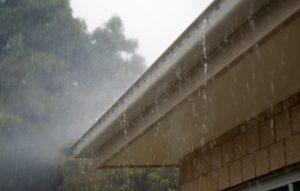Denver Roofing: Don’t Let a Leak Ruin Your Roof
You never think about your roof until there’s an issue. Whether it’s from snow, rain, hail, or just wear and tear, leaks can cause damage to your home as well as water damage and mold growth on the inside of your home. Unfortunately, leaks often go undetected for long periods of time before they are finally noticed; once that happens, the damage can be extensive and expensive to repair.
Everything You Need to Know About Roof Leaks

Roofs in a rainy climate need to be able to handle the moisture.
While there are many different types of roof leaks, they all have one thing in common – they cause costly damage. Prevent water damage by learning how to identify your leak, which repairs can resolve your leak, and what you can do before it is too late. The best way to prevent future leaks is through regular maintenance; learn more about when and how often you should clean your gutters, as well as other maintenance tips for maintaining a healthy roof. When it comes time for a repair, be sure to choose quality workmanship over price – even if that means spending more upfront.
Common Signs of Damage From Leaks
Even if you think your roof is secure, there are common signs of damage caused by leaks. You might not notice them right away, but it’s important to catch small problems before they become bigger issues. If you have seen one or more of these issues, consider calling a roofing company like Horn Brothers for an inspection as soon as possible. Some signs to look for are discoloration on walls or ceilings, mold and mildew growth, and water stains on ceilings. These could be warning signs that water has been leaking through your roof and damaging your home.
What to do About Water Damage
If your roof is leaking, you’re likely already aware of it — but roof water damage can be caused by a leak that goes undetected for a while. As soon as you notice water damage on your ceiling or anywhere else in your home, call a roofer immediately. On top of being unsightly and inconvenient, leaks can cause major damage to your home. They also lead to rot and mold growth on walls and ceilings inside — which means expensive repairs that could have been avoided with early detection.




You must be logged in to post a comment.